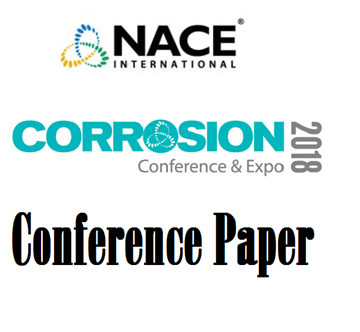Stainless steels have been used for a wide range of applications in seawater. They are known to be susceptible to localized corrosion under given conditions. This is often the limiting factor for the use of stainless steels for seawater applications.
Product Number:
51323-19063-SG
Author:
Charles Leballeur, Nicolas Larché, Perry Ian Nice, Bruce Cowe
Publication Date:
2023
$0.00
$20.00
$20.00
Stainless- steel alloys are often selected for seawater-handling applications to prevent localized corrosion. However, some stainless-steel grades with PREN below 40 are prone to corrode in natural seawater and are thus generally not recommended for seawater applications. Indeed, in natural untreated seawater the high chloride content conjugated with the so-called biofilm-induced ennoblement which occurs in natural seawater for most passive alloys enhance the localized corrosion initiation risk. Several studies have shown that it exists a dissolved oxygen threshold value under which stainless steel ennoblement due to biofilm settlement do not occur. In seawater injection well, very low dissolved oxygen concentrations are usually faced which could significantly reduce the risk of localized corrosion. Therefore, the use of low-grade alloys with PREN below 40 can be considered for such applications.
The crevice corrosion susceptibility of S42000, S41500, S17400, S31603, S32101, S32202, S82551, S31803 and S39274 has been investigated in natural seawater continuously renewed at different dissolved oxygen levels that may be present in a seawater injection well. Results obtained have allowed to assess the global evolution of the open circuit potential (OCP) as a function of the dissolved oxygen concentration for stainless steel alloys, and to estimate the corrosion initiation potential of each grade. Among those results, when dissolved oxygen level is maintained below 10 ppb, the OCP of all tested materials remained very low and no ennoblement due to biofilm occurred. Under these conditions, for all materials no sign of corrosion has been noticed. However, between 20 and 100 ppb, borderline conditions for the establishment of a biofilm were noticed which can lead to localized corrosion risk depending on the material and temperature.
This study provides engineering diagrams of interest for the selection of stainless-steel grades immersed in seawater with reduced dissolved oxygen level faced in seawater injection wells and other components.
This work also gives further information regarding the impact of dissolved oxygen on the ennoblement of stainless steel in natural seawater.




